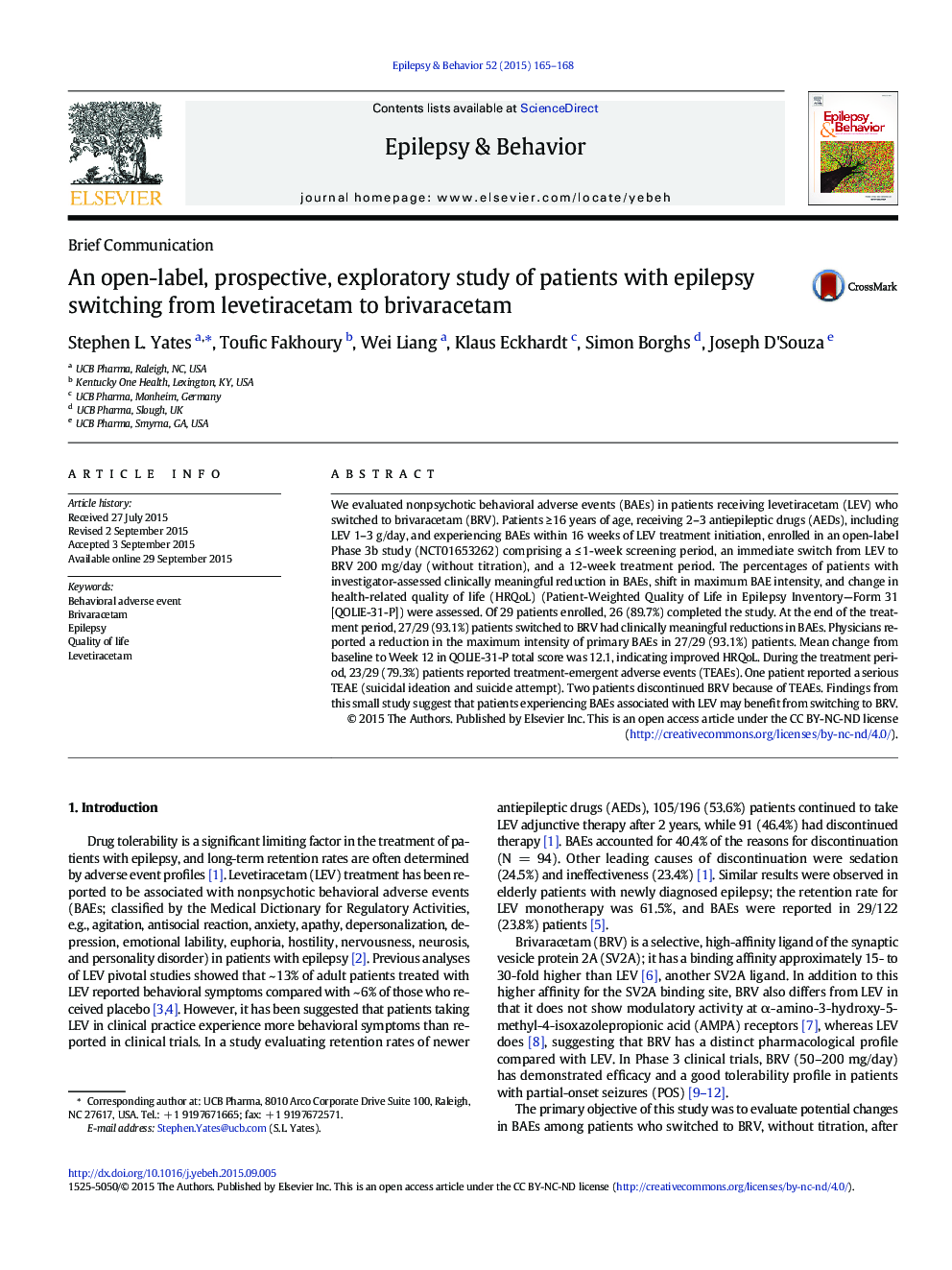| Article ID | Journal | Published Year | Pages | File Type |
|---|---|---|---|---|
| 6010429 | Epilepsy & Behavior | 2015 | 4 Pages |
We evaluated nonpsychotic behavioral adverse events (BAEs) in patients receiving levetiracetam (LEV) who switched to brivaracetam (BRV). Patients â¥Â 16 years of age, receiving 2-3 antiepileptic drugs (AEDs), including LEV 1-3 g/day, and experiencing BAEs within 16 weeks of LEV treatment initiation, enrolled in an open-label Phase 3b study (NCT01653262) comprising a â¤Â 1-week screening period, an immediate switch from LEV to BRV 200 mg/day (without titration), and a 12-week treatment period. The percentages of patients with investigator-assessed clinically meaningful reduction in BAEs, shift in maximum BAE intensity, and change in health-related quality of life (HRQoL) (Patient-Weighted Quality of Life in Epilepsy Inventory-Form 31 [QOLIE-31-P]) were assessed. Of 29 patients enrolled, 26 (89.7%) completed the study. At the end of the treatment period, 27/29 (93.1%) patients switched to BRV had clinically meaningful reductions in BAEs. Physicians reported a reduction in the maximum intensity of primary BAEs in 27/29 (93.1%) patients. Mean change from baseline to Week 12 in QOLIE-31-P total score was 12.1, indicating improved HRQoL. During the treatment period, 23/29 (79.3%) patients reported treatment-emergent adverse events (TEAEs). One patient reported a serious TEAE (suicidal ideation and suicide attempt). Two patients discontinued BRV because of TEAEs. Findings from this small study suggest that patients experiencing BAEs associated with LEV may benefit from switching to BRV.
